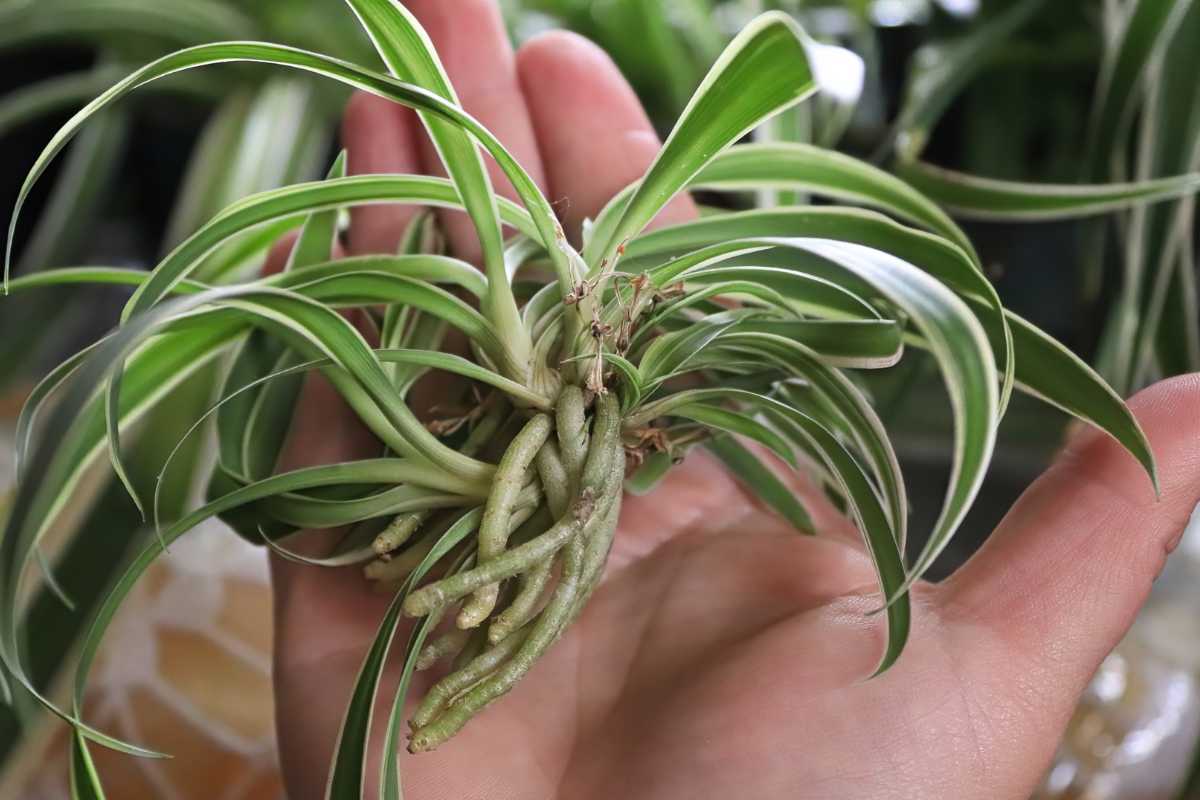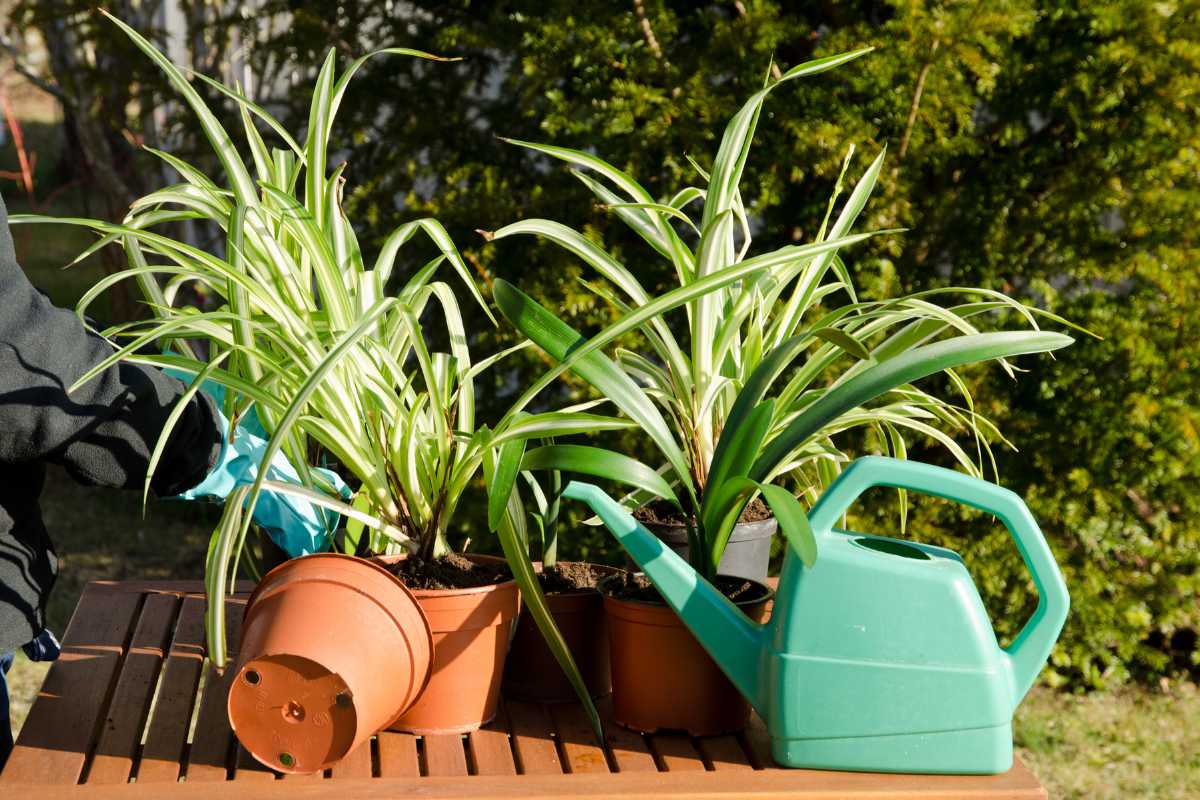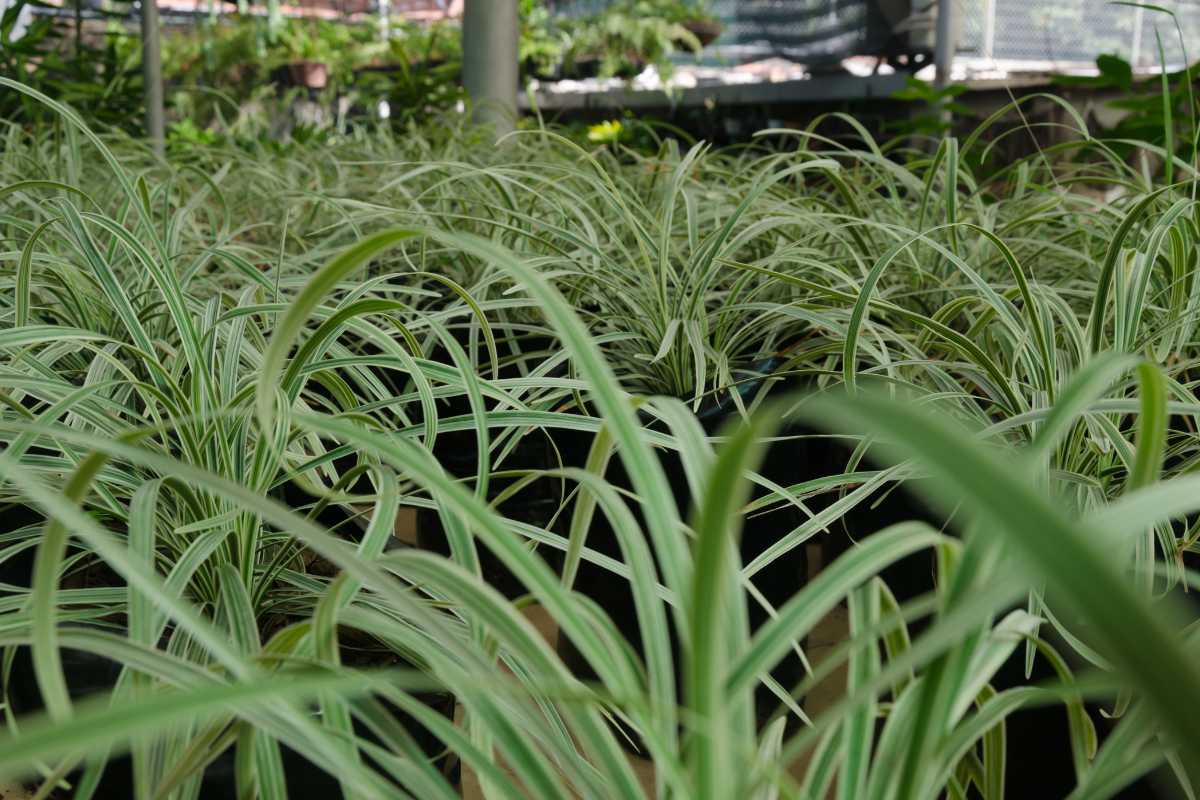The spider plant (Chlorophytum Comosum), also called spider ivy or airplane plant, is a popular houseplant that belongs to the asparagus family. It is easy to grow, purifies the air, and binds fine dust in its leaves’ waxy coating.
This type of plant prefers bright, indirect sunlight so it can grow exceptionally well in a household setting.
Perfect for busy families, this plant normally requires minimal water due to its fleshy roots that can store water for days. However, underwatering them will result in brown leaves.
We suggest you do a soil test by using a dry chopstick to know when it is time to water.
Its huge popularity is due to the fact that it isn’t toxic to humans or pets. It’s perfectly safe to keep in the house, although you should still exercise some caution if you have cats or dogs.
Fortunately, the reactions are quite mild, but you might still want to keep your spider plants away from your pets to avoid potential risks.
- Related article: Taking Care of Spider Plant
If you are fond of plants around the house and are planning to make a spider plant purchase soon, read this article to know more about this plant and its effects on humans.
Are Spider Plants Toxic to Humans?

Not only are spider plants not toxic to humans but they are also considered edible. This lovely plant is often cited as one of the best plants to have in the house if you have pets or children since it isn’t dangerous to them either.
Despite this, if large quantities are ingested, these plants can cause stomach aches in pets and sometimes even people.
The reactions are most probably caused by certain compounds similar to opium that are found in the plant’s green leaves.
In a similar way to when they ingest catnip plants (Nepeta cataria), the hallucinogenic nature of spider plants can get cats to be euphoric. You will most certainly notice since they usually react by behaving erratically, jumping wildly around the house.
In some countries, spider plants are consumed and used for their medicinal properties. When taken in the right quantities, the leaves and root tubers of spider plants are a good source of the following:
- Phosphorus
- Potassium
- Calcium
- Magnesium
- Sodium
- Lipids
- Amino acids
Moreover, these lovely plants are also rich in antioxidants and have been used in various cultures as traditional medicines to treat bronchitis, burns, bone fractures, and other conditions.
However, before using any part of this common houseplant be sure to collect more information and do a Universal Edibility Test (UET). This is a simple procedure that allows you to check small quantities of a plant to reduce the risk of getting sick.
Are Spider Plants Poisonous to Babies?

When asked which non-toxic houseplants are safe to keep in a house with a baby, most experts cite spider plants. Fortunately, it seems that there’s no cause for concern with these plants, even if your child should decide to nibble on a leaf.
It’s also a very fun plant to keep around, as children love transplanting their little babies. It’s so easy to grow that even young children can be involved in its care.
Children have never been reported getting sick or having an upset stomach from these plant materials, so no worries there.
Tips and Precautions When Handling Spider Plants

Even though spider plants aren’t poisonous to humans or pets, it might be wise to keep them away from cats and dogs.
Even though cats might enjoy the trip and start using these indoor plants as regular snacks, they are in danger of harming themselves when they get too affected.
Dogs also do damage to the plant’s leaves when they munch on it and it seems that they get sick only if they manage to eat very large quantities, such as a whole plant.
It is quite rare, but they could experience some vomiting or diarrhea.
This can be caused by the compounds similar to opium that we mentioned, which for them have no hallucinogenic effects.
Most often, dogs vomit the plant just like they do with grass, simply because they cannot digest greens. It’s actually your dogs that can be dangerous for spider plants.
Apart from the usual damage an overexcited puppy can cause by digging or overturning pots, dogs’ urine is potentially lethal to these plants. This is because it contains nitrogen in too high a concentration.
It’s wise then to keep this beautiful houseplant out of reach from your pets whenever possible.
A great solution is to place them in hanging pots in a corner where cats have nothing to climb on. You could otherwise keep them in the bathroom if your pets aren’t allowed in there, as these plants love high humidity.
If there are no places in your house that your cats or dogs can’t reach, you can consider spraying your plant leaves with a bitter-tasting repellant.
We advise against DIY recipes though, as you never know what adverse effects your pets could experience.
Also, pets might be overly eager to play with your spider plant foliage if they aren’t getting enough attention or stimulation.
By keeping them engaged with regular playtime, you will decrease the chance of them getting bored and looking for entertainment by bothering your plants.
A great solution for cats is to grow some indoor grass in the house that they can safely nibble on, while there are many fun toys for dogs to try.
Final Thoughts if Spider Plants Are Toxic to Humans

Spider plants are not toxic to humans or pets.
These easy-care plants can be grown in any home or office. Just make sure to provide them with bright indirect light and a good potting soil.
Although this plant is not toxic to pets, it would still be best to keep it out of their reach as consuming large amounts of the plant may result in distress to them.
Also, cats’ affinity for spider plants can result in some form of hallucination when ingested and this can make them very rowdy.
Other non-toxic houseplants that you might want to consider include air plants, chinese money plants, bamboo palms, and waffle plants.
What you need to avoid for your pets are aloe vera and the eternity plant.
If you learned something interesting from this article, wait until you get your hands on these other great reads:

